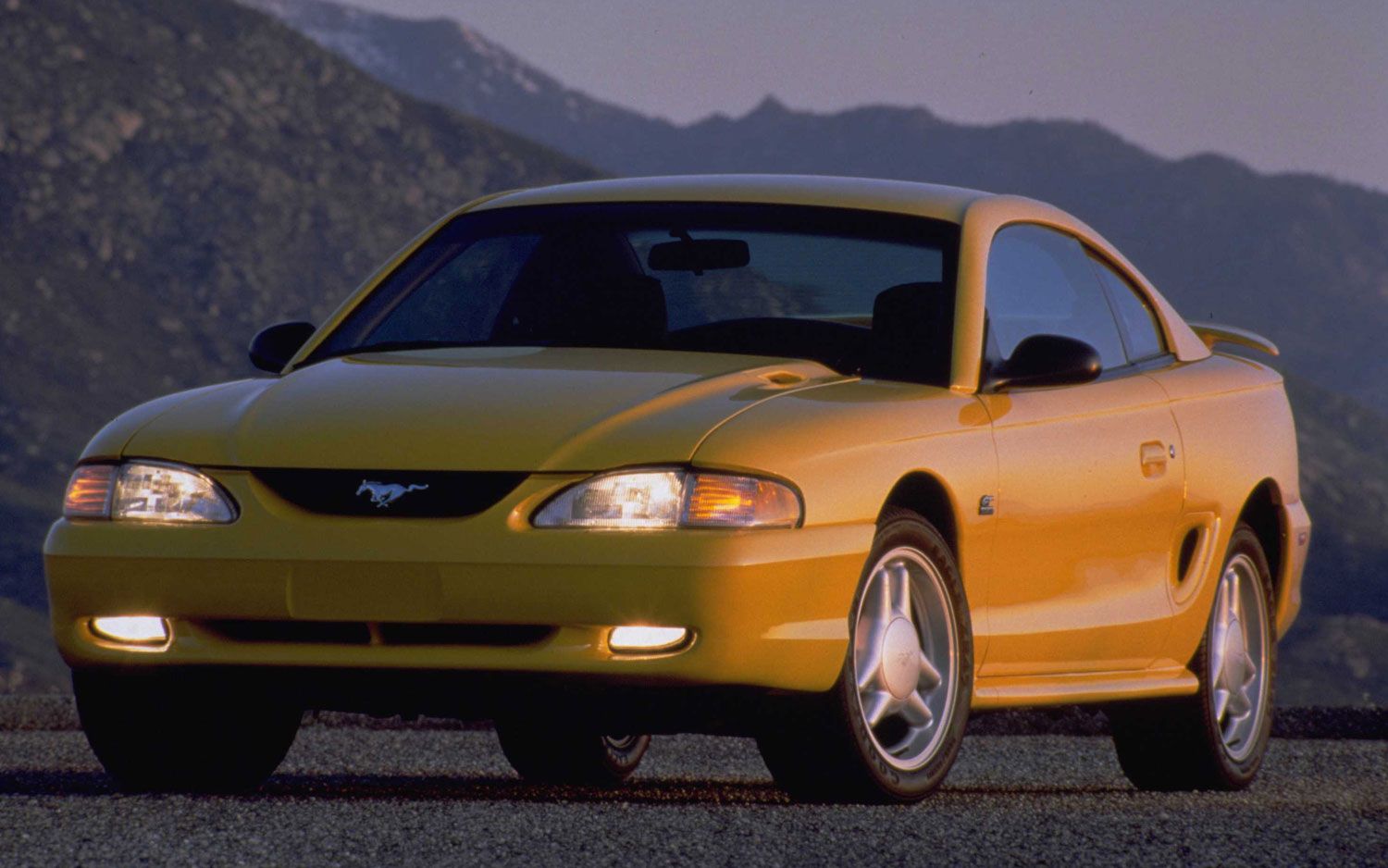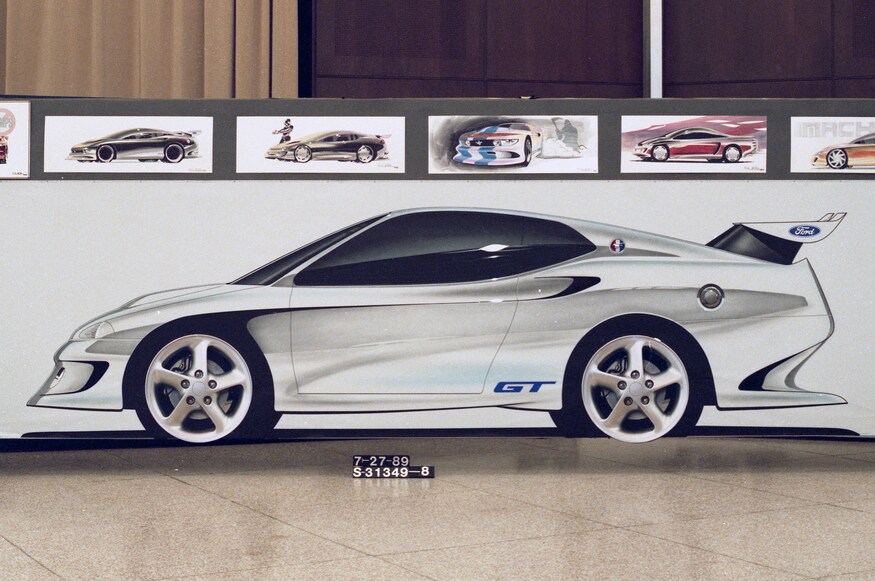The 4th Generation Ford Mustang
1994 – 2004
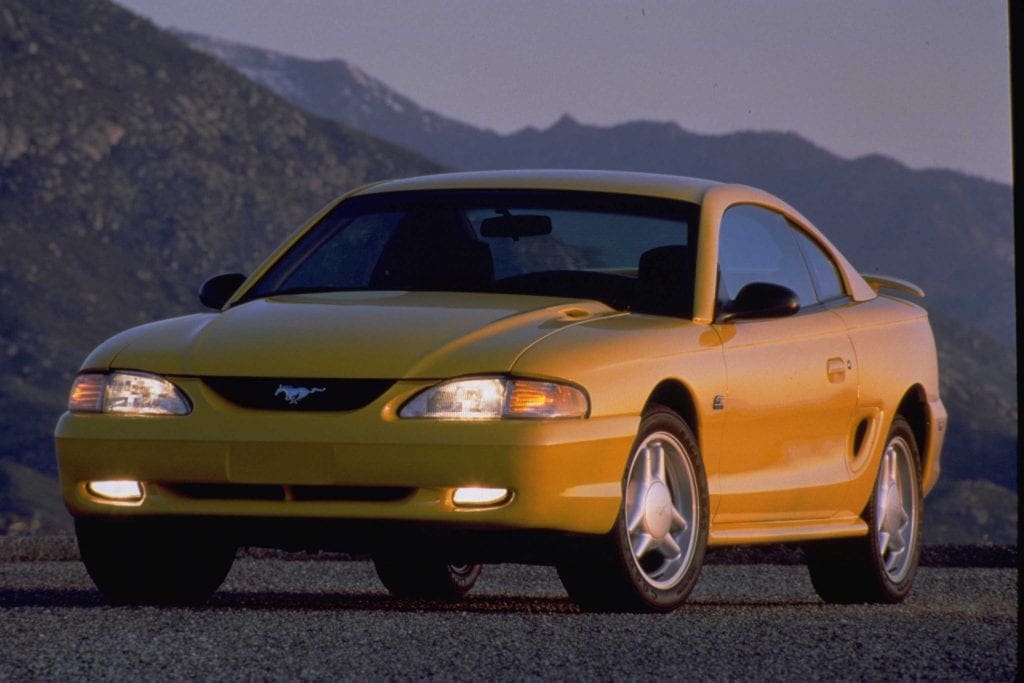
There is an interesting bit of history that surrounds the evolution of the fourth-generation Mustang. While there was little doubt of its continuation past the final model years of the Fox-body era, there was a lot of uncertainty as to the direction Ford would take their beloved Mustang when considering a next-generation model to supersede its predecessor.
The Ford planners behind the Mustang had begun work on a replacement for the Fox-body model in 1982, even though the then-current model was just three-years-old. As had been the plan for earlier iterations of the Ford Mustang, the “next-generation” model was initially conceptualized as a sporty front-wheel-drive compact automobile. The project, designated “SN8,” would be unlike anything Ford had produced (up to that point in history) and so Ford turned to Mazda for guidance and direction.
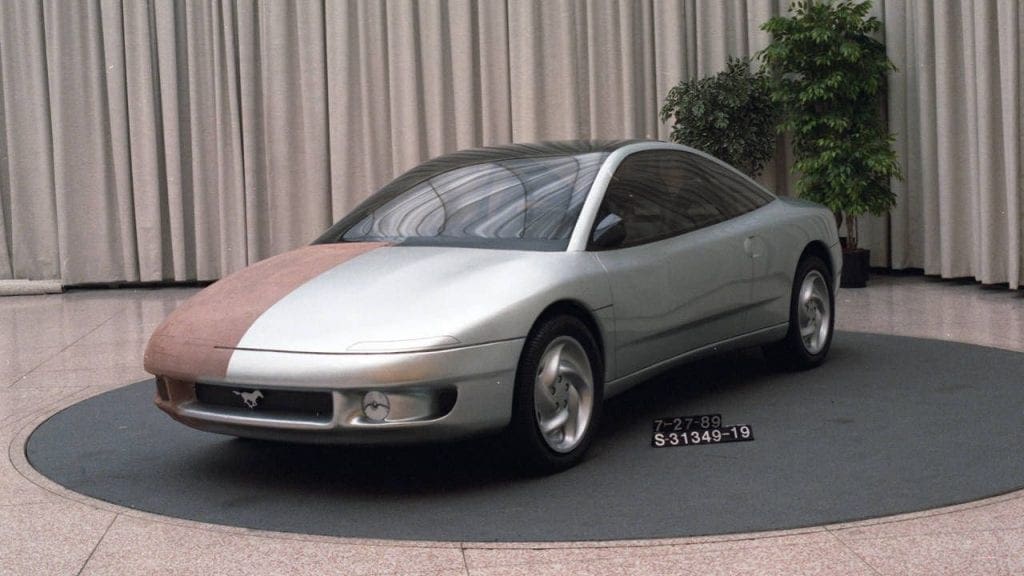
Mazda and Ford established a joint-venture agreement for the development of their next-generation Mustang, which now carried the code name “ST16.” By 1985, the two companies had manufactured a working prototype, much to the outrage of Mustang owners and enthusiasts around the globe. Despite these early objections, the rumors began circulating that a “rice burner” would replace the immensely popular Fox-body Mustang as early as 1988 or 1989.
Donald Farr, then-editor for Mustang Monthly Magazine said this in their July 1987 publication: “As much as I try to rationalize the whole deal, I just can’t force myself to accept Ford’s intended future for the Mustang. Call me old-fashioned or sentimental or just plain stubborn, but a Japanese car, even one built in America, is a Japanese car, and I’m not prepared to see a Mazda with the Mustang name and running horse emblems affixed to its fenders. After the Mustang has clawed its way to the top of the pony car heap once again, Ford plans to turn it into a front-wheel-drive copy of a Japanese car. Un-American, I say.”
Fortunately for everyone – both Mustang owners and enthusiasts, as well as the Ford Motor Company itself – the cries of the faithful, were heard as Dearborn was bombarded with more than 30,000 letters of protest denouncing the front-wheel drive compact car as a replacement for the beloved GT Mustang. The outcry from the fans had such an impact that it forced Ford’s planners to pause and to entirely re-evaluate the direction that they were taking with the Mustang program.
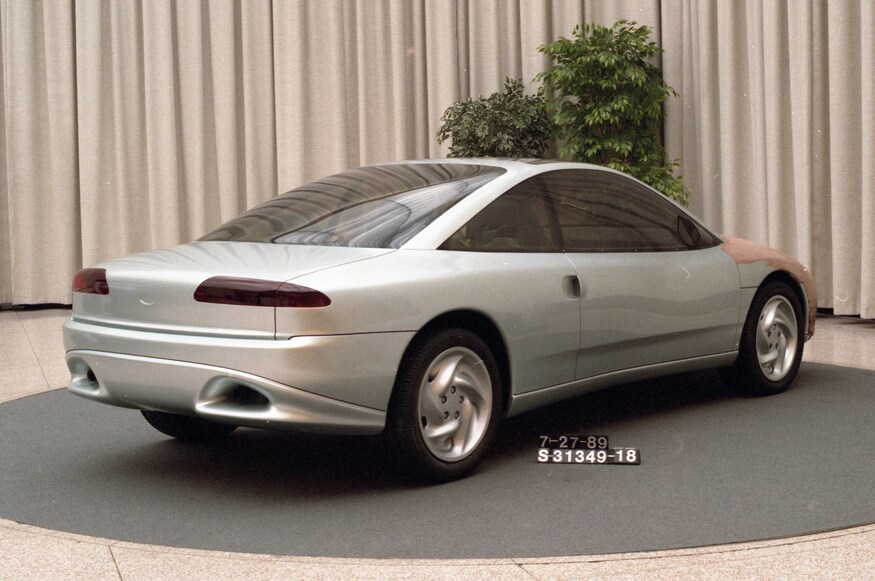
In August 1987, the Ford Motor Company announced that its new front-wheel-drive car would debut not as a Ford Mustang, but rather under a new brand name, the Ford Probe. This new car, which shared most of its mechanical infrastructure with that of the Mazda MX-6 sports coupe, was officially introduced by Ford in March 1988 as a 1989 model.
Ford’s announcement that their “next-generation Mustang” was now being introduced as the Probe created a couple of immediate issues. First, all the development work towards a new Mustang was focused on the design that became the Ford Probe, which meant that Ford had not put any serious work into any other variants of their pony car. Second, although the Fox-body Mustang had been in production since 1979, it would need to continue production for at least another four-to-five years while Ford engineers began work in earnest on a next-generation model to replace it.

Since most of the design and engineering resources would now be focused on a new Mustang, which was being targeted for introduction as a 1994 model, the current model would have to remain virtually unchanged for the remainder of its production run, which meant that very few changes would be introduced on the Mustang between 1987 and 1993.
Even after the decision was made to move forward with the Ford Probe, work on a new Mustang design moved at a “snail’s pace” for the next two years. It wasn’t until Alex Trotman became Ford’s executive vice president of North American Automotive Operations (NAAO) in 1989 that the tide began to turn on the development of a next-generation Mustang. Trotman enlisted the leadership of two NAAO directors – Ken Nabroski and Steve Lyons – to get the project on-task and underway.
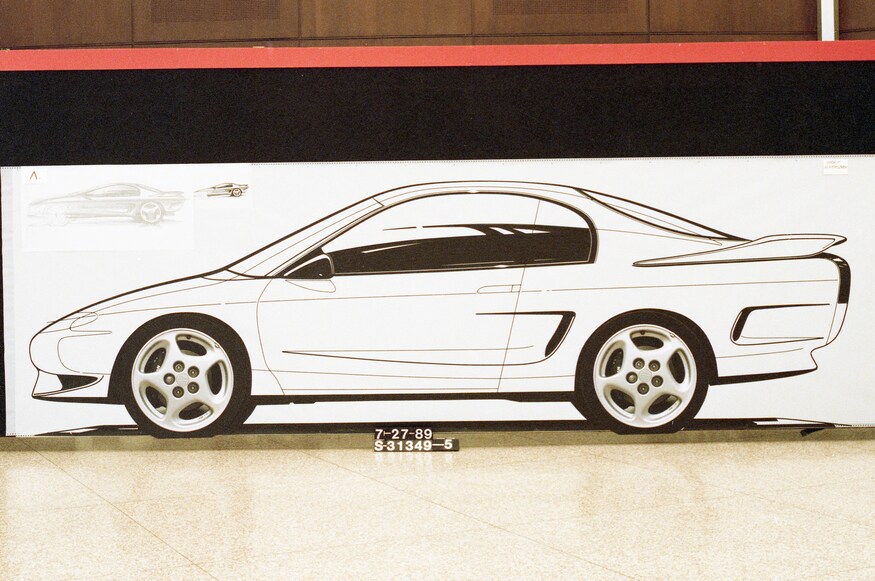
In turn, Nabroski turned to the Mustang’s engineering design manager, John Coletti, and instructed him to assemble a special team of freethinkers to concentrate solely on the development of a new Mustang. In August 1989, Coletti’s team, which consisted of just nine members, began meeting informally every Thursday afternoon to develop a business plan and establish design parameters for the car.
John Aiken, along with Dennis Reardon and Pat Schiavone, began sculpting an initial styling proposal of the next-generation Mustang’s exterior in November 1989. By February 1990, the clay model and a basic overall (interior, chassis, etc.) design plan were submitted to Alex Trotman for approval. Trotman liked the overall conceptual design enough to green-light the project. In May 1990 the program was officially code-named “SN95” and production was underway.
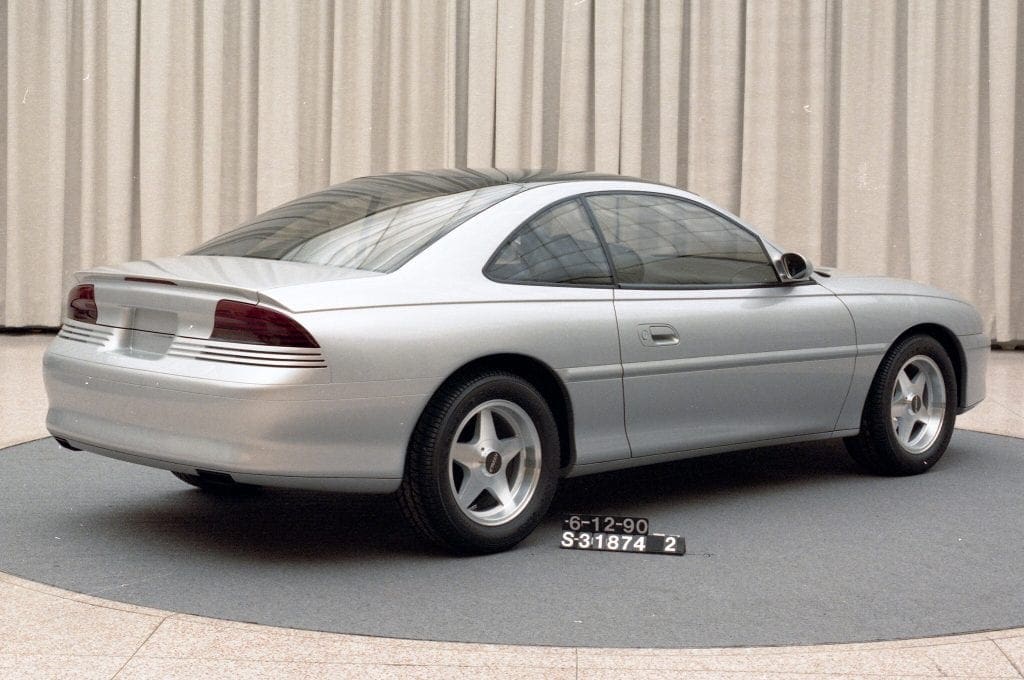
While Coletti’s “skunkworks” group was developed to get the Mustang design program back on track, his team of nine freethinkers was later replaced by “Team Mustang,” a dedicated group of engineers and designers that would fully realize the SN95 design into a viable prototype and (eventual) production vehicle. The team, which consisted of 450 members at the peak of the SN95’s development, took up residence in an old warehouse located in Allen Park, Michigan in June 1990.
Almost from the start, “Team Mustang” began hosting a number of consumer clinics (dubbed “gallop polls” by Ford) across the country to help them determine the future form of Ford’s beloved pony car. After all, it was the voice of the people that had dictated the decision not to market the Probe as a Mustang, so it seemed very reasonable that these clinics would provide the designers with the needed guidance to build a successful next-generation platform. Some design elements – such as maintaining a long hood and a short rear decklid (like that found on the current Fox-body) – were given, but what about the look and feel of the rest of the car?
“The people we interviewed wanted galloping horses on the car,” explained design manager Bud Magaldi. “But they also said that, even if you took the horses off, the car should still look like a Mustang….Our research clinics proved to us that a car could be perceived as too European or too Japanese.”
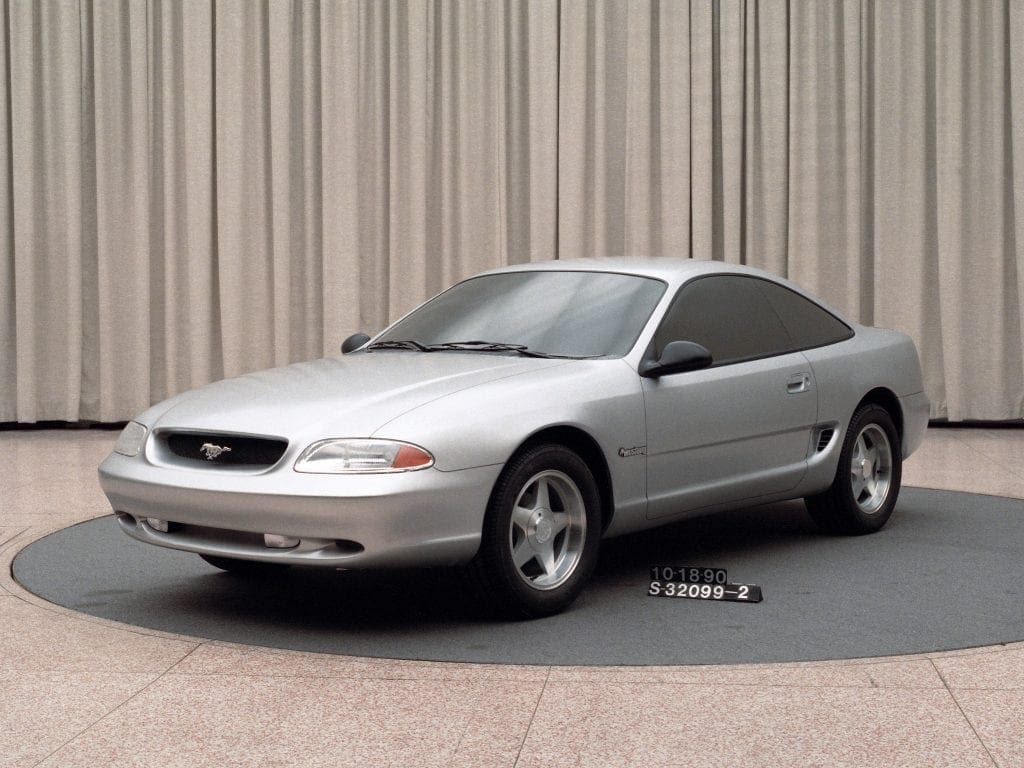
As the Mustang team continued work on the design of their new car, they worked diligently to incorporate an “American feel” into the car. Each design proposal began receiving nicknames of famous, patriotic athletes. One early design proposal was dubbed “Bruce Jenner” in honor of the Olympic gold medalist because, according to Magaldi, it was a “trim, athletic vehicle.” However, it still looked a little too much like the Probe and was quickly dismissed as a viable option.
In September 1990, two more patriotic themes were introduced that resulted in a design competition between two teams of designers.
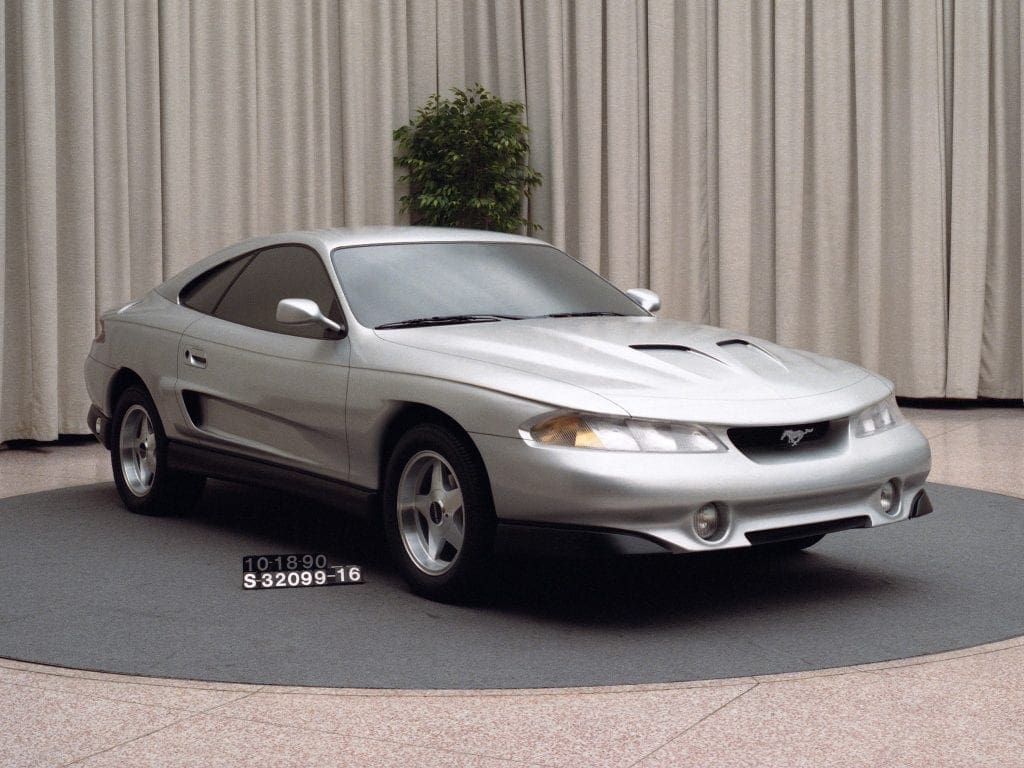
The first team, led by John Aiken (the man originally behind the Bruce Jenner design) developed a new design that became known as “Arnold Schwarzenneger” because it looked like the Jenner design had “gone to the gym and put on some muscle and bulk.” The second team, led by Dave Rees, produced “Rambo”, a car that was named for its “rawboned, gutsy looks” per author Mike Mueller.
The second design (“Rambo”) proved a bit too dramatic for the clinic critics, but the “Schwarzenneger” design was the proper blend of hard-and-soft lines. This second design was approved for production in November 1990.
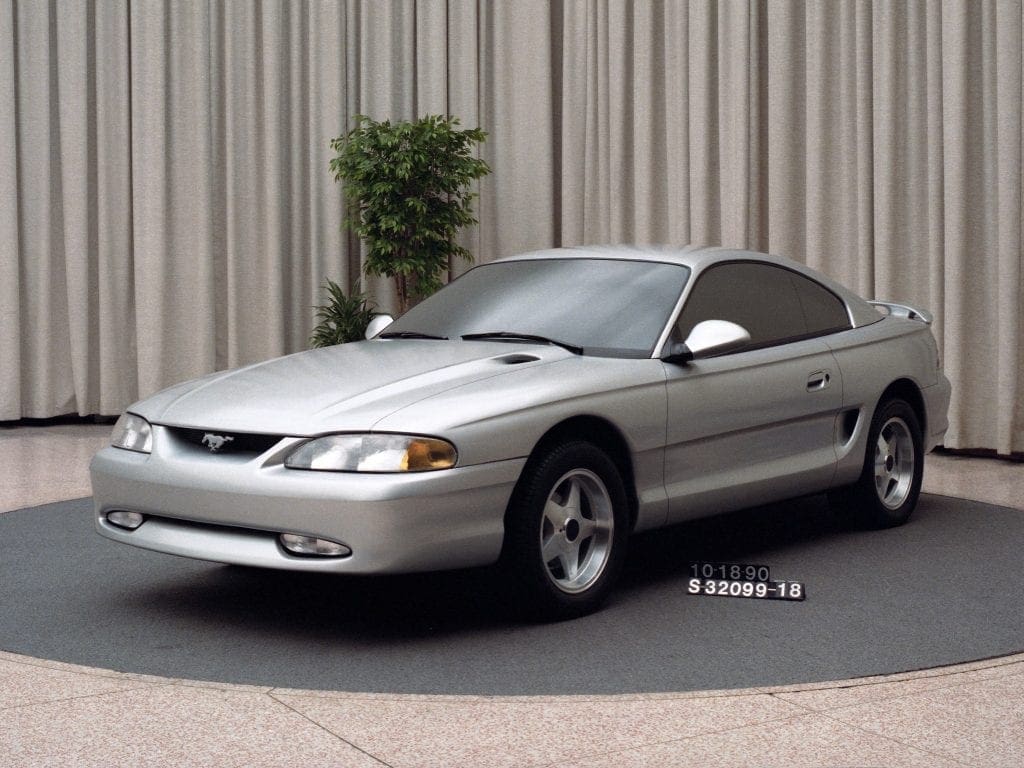
Once the design was approved, the development of the production car accelerated quickly, thanks in large part to a new manufacturing process developed by Ford called World Class Timing (WCT). This new program streamlined many of the production procedures to reduce costs and save production time.
The fourth-generation Mustang was the first application by Ford to use the new WCT process. It proved to be immensely beneficial in streamlining the car’s production process. Taking the car from clay model to regular production took just 35 months, which shaved more than a year off the normal development time required to fully realize a new car design.
In addition to reducing production time, using the WCT process also saved considerable production money. Where most cars cost approximately $1 billion dollars in developmental costs, the new SV95 Mustang had a development price tag of approximately $700 million dollars.
Arguably, another significant time-and-cost savings best practice that took place during the development of the new Mustang was bringing “Team Mustang” together under one room in the Allen Park facility.
Per Will Boddie, program manager of the 2004 Mustang and CEO of Ford of Germany, “bringing all involved in the project beneath the same roof improved communications by trading traditional chimney-type channels with informal over-the-wall discussions. Someone could ask me a question at the coffee pot, and I could make a decision in 10 seconds that might have taken three weeks if it had to go through some formal chain of command.”
The final design featured styling by Bud Magaldi that incorporated some stylistic element from the classic Mustangs, including the galloping horse in the grille, the C-shaped side-scoops that were placed just ahead of the rear wheels in the back fenders, and the three-element taillights that made up much of the rear fascia.
Ford elected to continue production of a convertible model, but the previous notchback and hatchback Mustangs that had dominated the entire Fox-Body generation were discontinued in favor of a single fastback coupe body style.
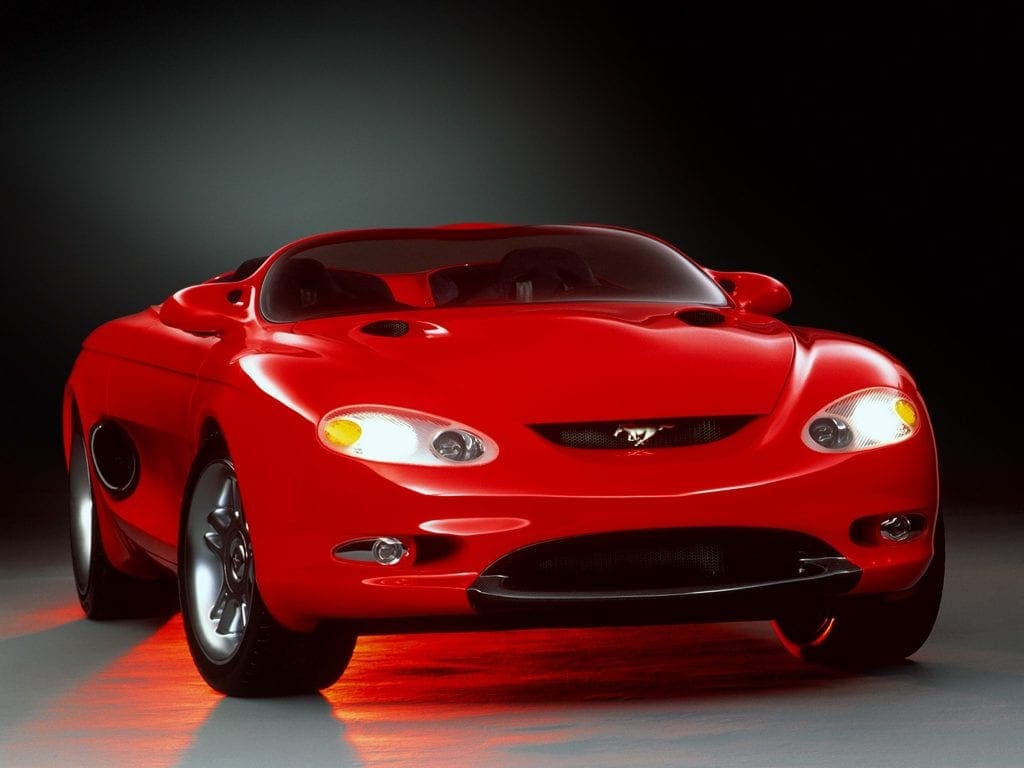
Just prior to the redesigned Mustang’s production launch, a two-seater show car designed by Darrell Behmer and Bud Magali was introduced at the 1993 North American International Auto Show (NAIAS) in Detroit. The car, dubbed the Mach III, featured a supercharged 4.6L DOHC V8 engine which produced a whopping 450 horsepower (336 kW, 456 PS). Although that particular engine was not intended for production, it was generally believed that the engine might be a sign of things to come in future iterations of the beloved pony car.
“Job One”, the first fourth-generation Mustang to roll off the assembly line, made its debut in October 1993, a full two months ahead of schedule. Although there is no question that the WCT processes aided in accelerating the production process, a lot of the credit was also given to Coletti’s crew for getting much of the early groundwork completed and out of the way before “full-fledged concept to completion (CTC) work” began. Additionally, the current SN95 Mustang relied heavily on existing powertrains and was, in fact, based on a revamped version of the Fox Body Mustang.
That’s not to say that this new Mustang was a carryover of previous models. Of the 1,850 components required to build the new Mustang, 1,350 of them were reportedly developed as part of the SN95 production process. Still, there were enough carryover elements from the previous-generation to this to give many consumers a sense that this Mustang, while marketed as new, might actually carry more DNA from the previous-generation than Ford was letting on.
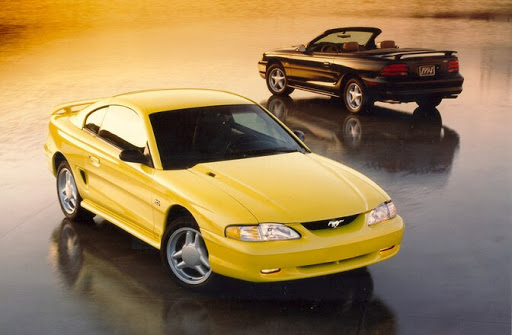
The 1994 Ford Mustang went on sale on December 9, 1993, with a base price of $13,355 for the V-6 coupe, $20,150 for the V-6 convertible, $17,270 for the GT coupe, and $21,960 for the GT convertible.


